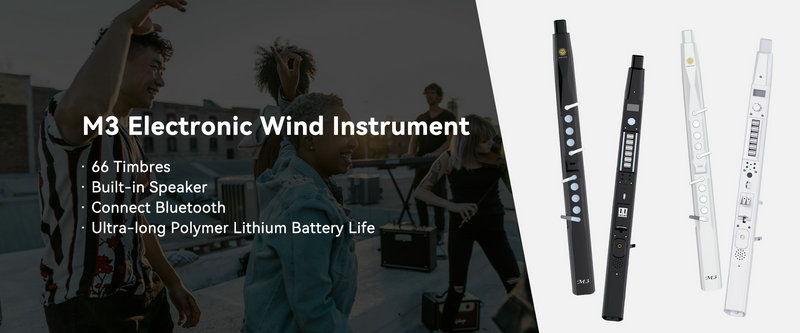The high prices of mainstream electric wind instrument brands can be attributed to several factors:
Research and development costs:
Advanced technology and innovation: To achieve high-quality sound reproduction, accurate pitch control, and rich functionality, these brands invest a significant amount in research and development. For example, developing unique sound synthesis algorithms, improving the sensitivity of breath control sensors, and ensuring stable and reliable electronic circuits all require substantial R & D efforts and financial investment3.
Frequent updates and improvements: The field of electric wind instruments is constantly evolving, and mainstream brands need to continuously update and upgrade their products to meet the changing demands of musicians. This means ongoing R & D expenses to incorporate new features, enhance performance, and stay competitive in the market.
Material and manufacturing quality:
High-quality materials: Premium electric wind instruments often use high-quality materials such as special alloys, advanced plastics, and fine woods (for certain components) to ensure durability, stability, and excellent acoustic properties. These materials are more expensive than common materials, which contributes to the higher cost of the instruments1.
Precise manufacturing processes: Mainstream brands adhere to strict manufacturing standards and use advanced manufacturing techniques, such as precision machining, meticulous assembly, and strict quality control. Skilled craftsmen may be involved in the production process, especially for some high-end models that require handcrafting, which increases the labor cost and overall manufacturing cost14.
Sound quality and performance:
Superior sound reproduction: These instruments are designed to produce high-fidelity sounds that closely mimic the tones and timbres of various traditional wind instruments. Achieving such excellent sound quality requires advanced sound processing technology and high-quality components, which add to the cost.
Excellent playability and responsiveness: Mainstream electric wind instruments offer better playability, with smooth key action, accurate breath response, and comfortable handling. This requires sophisticated design and fine-tuning during the manufacturing process to ensure that musicians can achieve precise control and expressiveness during performance.
Brand reputation and after-sales service:
Established brand value: Well-known brands have built a reputation over the years through their consistent product quality and innovation. Musicians are often willing to pay a premium for products from these trusted brands, as they associate them with reliability and excellence.
Comprehensive after-sales service: Mainstream brands usually provide better after-sales support, including warranty services, technical support, and access to spare parts. Maintaining a high level of after-sales service requires investment in human resources and infrastructure, which is also reflected in the product price.
SUNRISE MELODY M3 Electronic Wind Instrument - The best-selling Electronic Wind Instrument
. 66 Timbres
. Built-in Speaker
. Connect Bluetooth
. Ultra-long Polymer Lithium Battery Life



